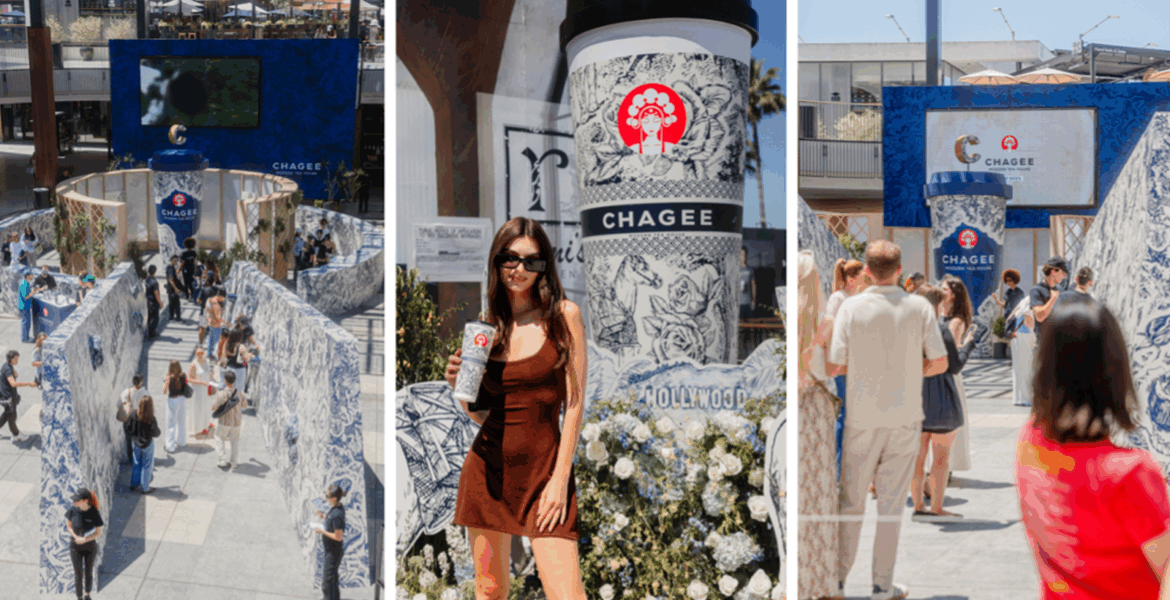By Kristen Jackman, SVP, Westfield Rise US
In an era of rapid retail evolution, the idea of a mall as merely a place to shop is outdated. Flagship malls—like Westfield Century City, which will in fact welcome more visitors than Disneyland this year—have transformed into dynamic and multifaceted destinations where commerce, culture, and community converge. These places are more than just shopping destinations; they are modern town squares that shape trends, drive purchases, and serve as prime opportunities for brands to engage with their audiences.

Located at the Heart of the Community
At their core, flagship malls sit at the intersection of retail, entertainment, and social interaction. They function as lifestyle centers where visitors aren’t just browsing but rather participating. Shoppers come for concerts, food festivals, pop-up markets, art installations, and family events, making the mall a true destination for the community. In fact, research shows that 70% of consumers want retail spaces to reflect the local community and serve as gathering places. Mall owners have taken note: Westfield’s strategy, for example, is to transform its flagship properties into “multidimensional destinations where people can live, work and play,” effectively turning these spaces into dynamic platforms for culture and engagement. The result is an environment where people linger for experiences, not just errands – and where brands can naturally become part of the community’s story.

This shift in mall culture means that a trip to a premier shopping center might include yoga on the plaza in the morning, a tech demo or book fair in the afternoon, and a live music performance in the evening. Such experiential richness has reinvented the mall as a modern-day town square – a place where relationships are built and cultural moments unfold, not simply where goods are bought and sold. For marketers, this evolution presents a unique opportunity: these flagship malls shape trends, drive word-of-mouth, and serve as prime stages for brands to engage audiences in real life, even if a brand doesn’t operate a permanent store there.

The Power of Live Engagement
The rise of immersive experiential is a defining trend of this decade. Consumers today crave experiences and shareable moments as much as (or more than) products. By 2025, over half of retail floor space is expected to be dedicated to experiences rather than product display, according to a major study. Globally, 81% of shoppers say they are willing to pay more for immersive experiences in retail. This is the new reality driving mall development – and it’s why flagship malls have become canvases for media and experiential marketing that bring brands to life.

For brands looking to build credibility and excitement, a flagship mall offers a high-impact arena to connect with consumers during their moments of leisure and discovery. Interactive digital billboards, augmented-reality demos, product pop-up shops, and influencer events are now common sights in these venues. The payoff from such experiential activations can be huge: nearly 98% of attendees at brand events create digital or social content about the experience, amplifying the reach far beyond the mall itself through user-generated posts. A well-crafted mall activation doesn’t just drive foot traffic – it sparks conversations online and offline. Moreover, these experiences convert. Studies indicate 85% of consumers are more likely to purchase a product after participating in a brand’s experiential event, and a significant majority feel a stronger connection to the brand afterward (almost 90% feel more connected after attending an event). In other words, mall-based experiences can turn casual shoppers into loyal customers by forging an emotional bond.

Crucially, what happens in a mall doesn’t stay in the mall. The social validation and excitement generated in a physical space feed into digital buzz. One live activation in a flagship center can reach thousands on-site and millions more through social sharing and word-of-mouth, as attendees pass along their memorable encounters. It’s no wonder brands are reallocating budgets toward experiential retail campaigns. Traditional advertising alone is losing its luster – 87% of consumers say brand experiences are more memorable than TV ads. Flagship malls, with their guaranteed crowds and curated ambiance, offer an ideal stage for these memorable brand experiences.
Five Ways Brands Can Leverage the New Town Square
1. Incorporate Digital Touchpoints
Bridge physical and digital engagement. Invest in high-impact digital out-of-home media from immersive LED screens to interactive kiosks that can captivate mall visitors.

2. Create Meaningful Shareable Moments
Design experiences that inspire social sharing. An engaging mall activation should be camera-ready and conversation-worthy. Whether it’s a stunning art-piece display, a fun photo booth, or an exclusive product trial, think about what will prompt visitors to snap a picture or record a video.

3. Align with Culture and Community
Align activations with moments that resonate—seasonal launches, partnerships with major events, or thematic experiences that connect to trends that your audience cares deeply about.

4. Drive Purchase Intent
Exciting experiences are great, but marketers ultimately want to see conversions. Make it easy for consumers who interact with your brand in the mall to take the next step towards purchase.

5. Own the Town Square Mentality
Approach the mall as a storytelling platform, not just a point of sale. A flagship mall is more than a retail location; it’s a stage for brand storytelling and immersion. Marketers should embrace this by crafting immersive brand narratives within the mall environment.

An evolutionary space
Flagship malls today are far from relics of retail. They have evolved into adaptive, multidimensional spaces that influence buying behavior and shape brand perception in ways few other environments can. These malls are not just places where transactions happen; they’re places where relationships are built. They are the modern arenas where cultural moments unfold and communities come together – and where brands can establish a lasting presence in the minds of consumers.

For marketers in the retail sector, the implication is clear: to drive engagement, build credibility, and foster loyalty, it’s time to rethink the role of the mall in your strategy. A flagship shopping center is no longer just a distribution point for products – it’s a vibrant media and experience platform, a direct line to high-intent audiences in real life. From Los Angeles to London and beyond, the mall is becoming more than a mall – it’s a movement. Brands that recognize and embrace the flagship mall as the new town square of culture and commerce will be the ones to shape the next chapter of retail success.



